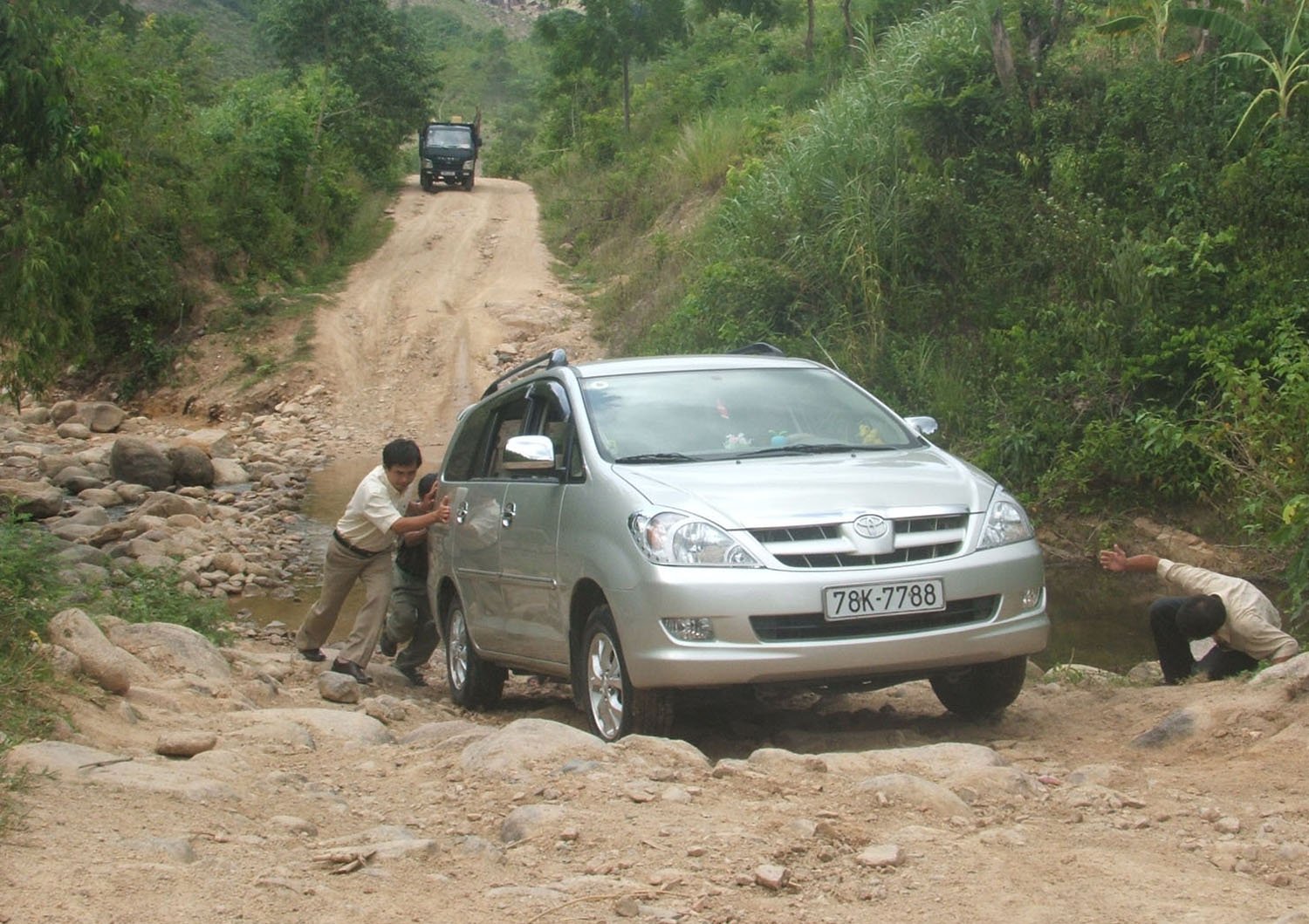 |
| The road to Phu Mo in the 2000s and before. Photo: XUAN HIEU |
Discovering an abandoned village
In 1997, the Quy Nhon - Song Cau route was started with a total length of more than 33km, of which about 14km passed through Xuan Hai commune, Song Cau town. When the project was still in its early stages, journalist Tan Loc and I went there to work.
Located next to the beach, about 500m from the area where the units had just blasted and broken rocks to open the road, we discovered a fishing village with about 10 households living in simple level 4 houses, mostly thatched bamboo houses with roofs made of coconut leaves. They are from Binh Dinh, but are living in the adjacent area of Xuan Hai commune, Song Cau town. Coming here to make a living since the 1960s, most of them live by fishing, mainly catching seafood along the shore, some work as charcoal burners, and gathering firewood. Every day, men and young people go to sea in small boats or basket boats to catch fish and shrimp, usually leaving in the evening of the previous day and returning the next morning. They use part of the seafood they catch during the day, dry it, and make fish sauce, and the rest they row to Ganh Rang (Quy Nhon), or to village 2, Xuan Hai commune to sell. Among the families living in the border area between Quy Nhon and Song Cau, there is a family with only a mother and daughter. The mother is old, and the middle-aged daughter is born mute. Every day, the mother and daughter have to go out to collect firewood to exchange for rice, fish... to survive, thanks to the support of the surrounding families.
According to the people in the village, because they live isolated from the outside world; the surrounding terrain is mountains and forests, and the sea in front, they do not know anything about administrative procedures, associations, or organizations. Not only during the war, but also after the liberation of Binh Dinh, Phu Yen , and the South, they were still "forgotten" in the deserted coastal area. From the elderly to the children, everyone was illiterate.
After this assignment, we had an article reflecting on “A forgotten fishing village” which mentioned “the old mother and the mute girl” and several other articles.
After the article was published, especially since this coastal route was opened and became National Highway 1D, this fishing village became known. Residents living along the route, once called a remote area, also began to change their lives, their lives were constantly improving. The once desolate land has turned around, full of life…
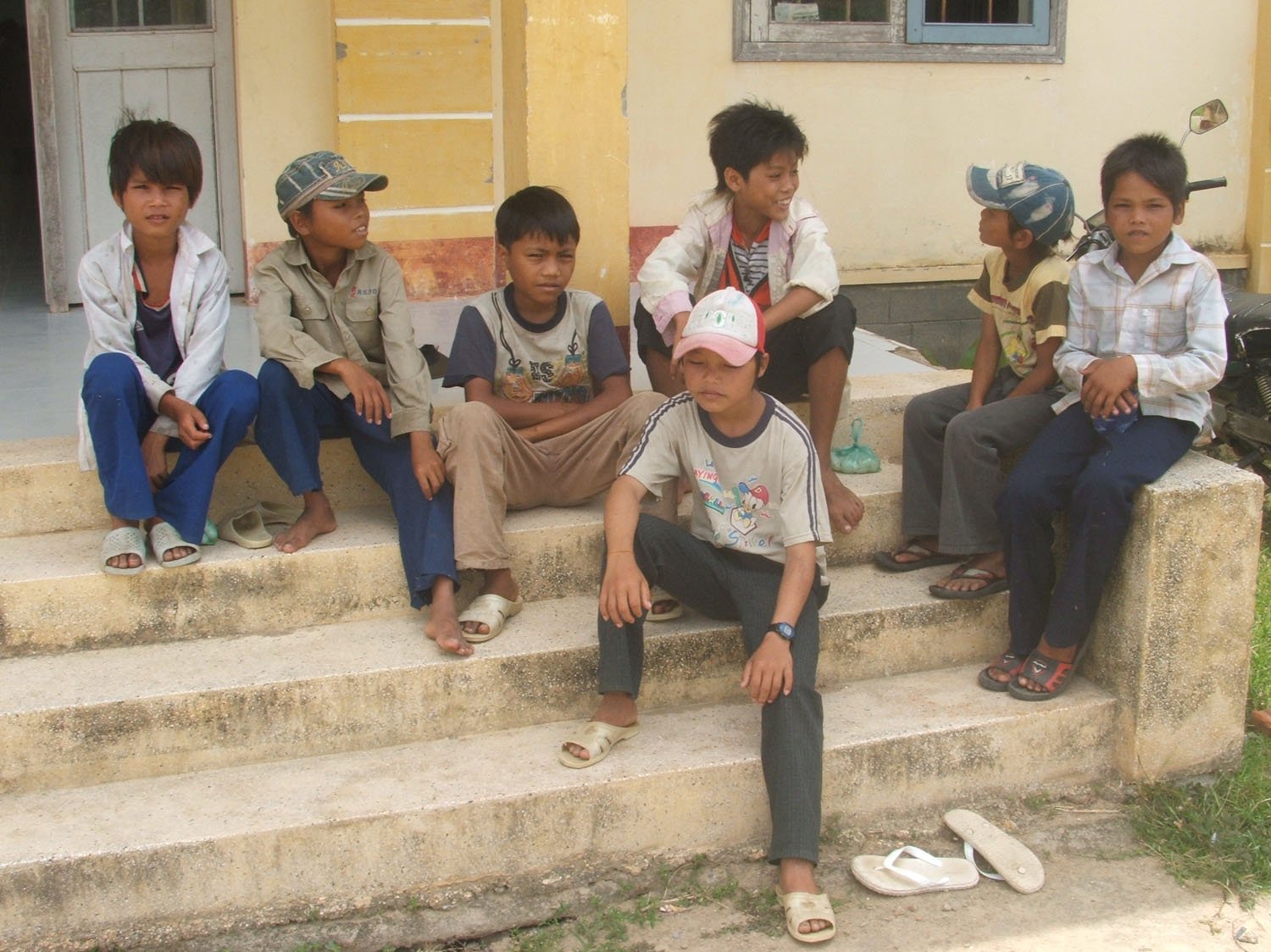 |
| Students of Dinh Nup Ethnic Boarding School at that time. Photo: XUAN HIEU |
Election in Phu Mo
Ethnic minority communes in the three mountainous districts of Song Hinh, Son Hoa, and Dong Xuan now have asphalt and concrete roads reaching the villages. One of the farthest places, such as Phu Hai and Phu Dong (Phu Mo commune, Dong Xuan district), can be traveled back and forth in a day from Tuy Hoa city by motorbike or car. However, this same route, if traveled 20 years ago, would have been extremely difficult, taking at least 1 day to go and 1 day to return, sometimes when it rained or the stream water rose, getting stuck in the middle of the road.
In 2002, I was assigned by the Editorial Board to monitor and propagate the election in Dong Xuan district, including Phu Mo commune - a locality bordering Gia Lai and Binh Dinh - where most of the ethnic minorities (Cham, Ba Na) live. The election took place on May 19, Uncle Ho's birthday, but 2 days before, I was in La Hai, and the next morning I was in Phu Mo. Many officials from the province and Dong Xuan district also arrived one or two days in advance to support the locality. One of the most important steps was to decorate the polling place, but up to this point, the local information officers were still struggling. As a former officer of the Culture sector, experienced with "flags, lights, trumpets, drums" activities, I rolled up my sleeves, helped them cut letters, decorate the festival...
That night, we set up tables and chairs to sleep at Dinh Nup Ethnic Boarding School. It was early summer, so there were still some teachers and students staying at the school. During the simple dinner with only dried fish, wild vegetables and people who were in charge of spreading knowledge in this highland commune, I learned that they were teachers from the plains districts, volunteering to come here to teach each letter to the ethnic minority children. With their love for the profession, the teachers did not hesitate to cross the forest, wade through streams, and strive to overcome difficulties and deprivations both materially and spiritually to successfully complete the task of "cultivating people", lighting the fire of knowledge, and cultivating a bright future for students in the revolutionary base area during the two resistance wars against an inviolable enemy.
Because I knew for sure that I could not return early to vote at my place of residence, I had previously requested a local certificate "voting elsewhere" to add my name to the voter list and participate in the election in this mountainous commune.
To Mui Dien lighthouse by... sea
Mui Dien Lighthouse (Dai Lanh Cape) located in Hoa Tam Commune, Dong Hoa Town is one of the destinations that is increasingly attracting domestic and foreign tourists . Since the Phuoc Tan - Bai Nga road was completed and put into use, it is not difficult to get to the place where the first sunrise on the mainland of Vietnam is seen, but if you go back more than 20 years ago, for many people it was not easy.
At that time, when the Phuoc Tan - Bai Nga road had not yet been started, the only way to get to Mui Dien was to go through the forest and climb mountains. But once, in the role of the Party Committee in charge of the organization, I and the Phu Yen Newspaper Youth Union (at that time, journalist Tan Loc was the secretary) went to Mui Dien to have a picnic, organize a ceremony to admit new members, and work by sea.
After riding a motorbike from the editorial office to Vung Ro port, we boarded a boat and canoe directly steered by the green-uniformed soldiers of the Vung Ro Border Guard Station, a sister unit of the Phu Yen Newspaper. From the port, the canoe tore through the waves and led the way, while the boat carrying the group slowly accelerated behind, heading out to the estuary and then along the rocky outcrops with many interesting shapes heading north. Many young people were very excited to be on the lighthouse for the first time. Because of this, some of them got seasick just by getting on the car, like technician Phuong Nam or reporter Thuy Hang, who had just "naturalized" into the Phu Yen Newspaper's common house at the end of last year, but throughout the journey from Vung Ro Bay to Bai Mon, which took about an hour, they still persisted in getting seasick, then freely let their souls wander with the amazing nature.
In 2002, I was assigned by the Editorial Board to monitor and propagate the election in Dong Xuan district, including Phu Mo commune - a locality bordering Gia Lai and Binh Dinh - where most of the ethnic minorities (Cham, Ba Na) live. The election took place on May 19, Uncle Ho's birthday, but 2 days before, I was in La Hai, and the next morning I was in Phu Mo.
A rather arduous but equally interesting section, leaving a lasting impression on many people, was when the boat entered Bai Mon. Because the tide was low, the boat could not get close to the edge of the sand and had to stop halfway up the sandbank, almost up to the head of a person. One person had to carry another, the tall person helped the short person… to get to shore.
The final stage was… climbing the mountain. At that time, the slope up to Mui Dien did not have steps built like today, but was all natural gravel and rocks, so if you were not careful, it was easy to slip and get scratched. However, in front of the beautiful picture of nature, walking and admiring the scenery and feeling more energetic, everyone arrived safely. The outdoor activity, interacting with the green-uniformed soldiers and the lighthouse keepers was more successful than expected.
After this trip, many articles about Mui Dien, the lighthouse keepers and the soldiers in green uniforms came to readers.
Source: https://baophuyen.vn/xa-hoi/202506/thuo-ay-len-nui-xuong-bien-3a6122b/


![[Photo] Party Congress of the Central Internal Affairs Commission for the 2025-2030 term](https://vphoto.vietnam.vn/thumb/1200x675/vietnam/resource/IMAGE/2025/6/23/5bf03821e6dd461d9ba2fd0c9a08037b)
![[Photo] Prime Minister Pham Minh Chinh holds meeting to launch exhibition of national achievements to celebrate 80th National Day](https://vphoto.vietnam.vn/thumb/1200x675/vietnam/resource/IMAGE/2025/6/23/0c0c37481bc64a9ab31b887dcff81e40)


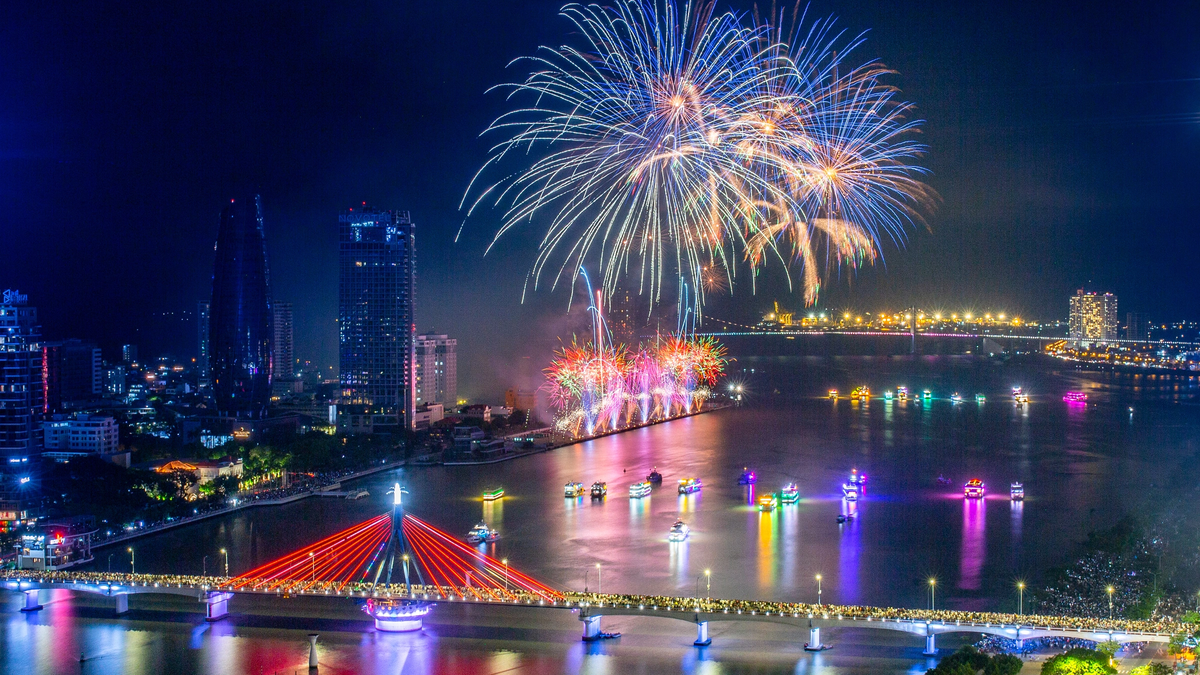



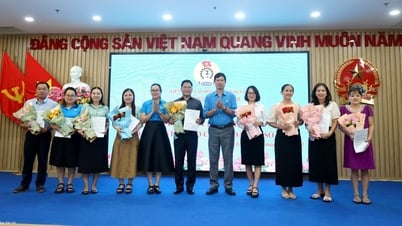

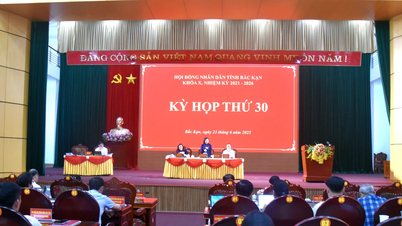
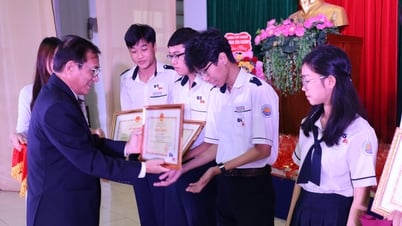


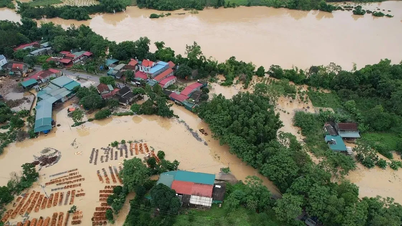






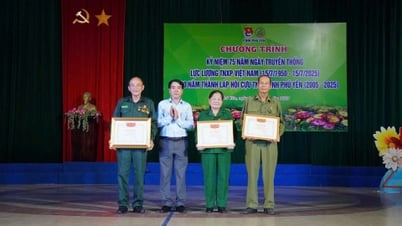
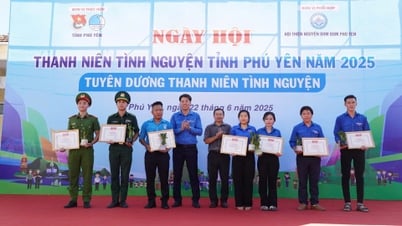
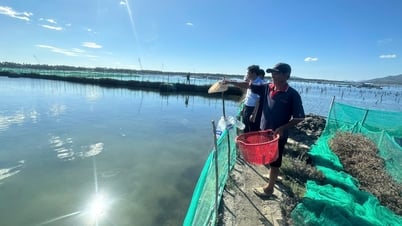


![[Photo] Conference to disseminate the implementation of the Plan to promote digital transformation to meet the requirements of restructuring the political system's apparatus](https://vphoto.vietnam.vn/thumb/1200x675/vietnam/resource/IMAGE/2025/6/23/4744403cccd144b79086799e2ceb686e)
































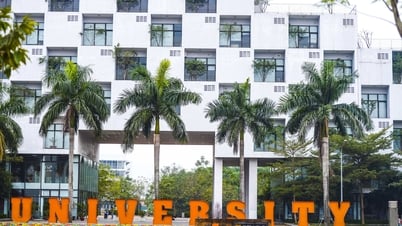





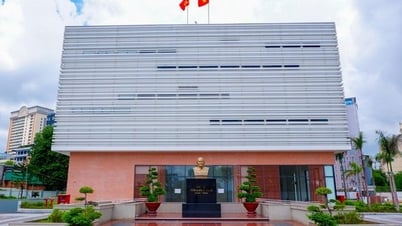

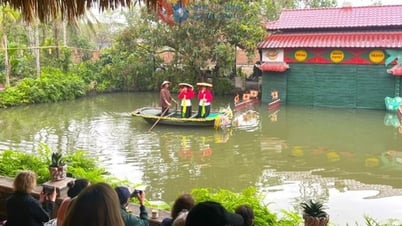


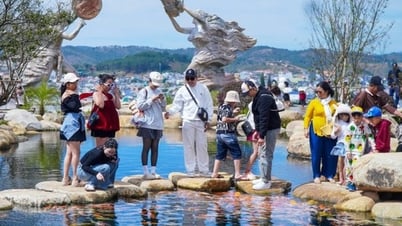






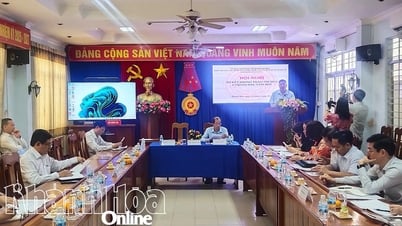

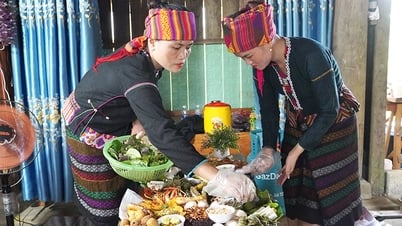

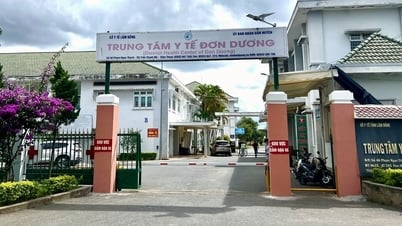








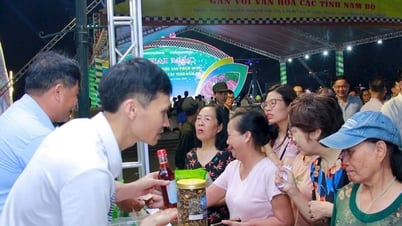


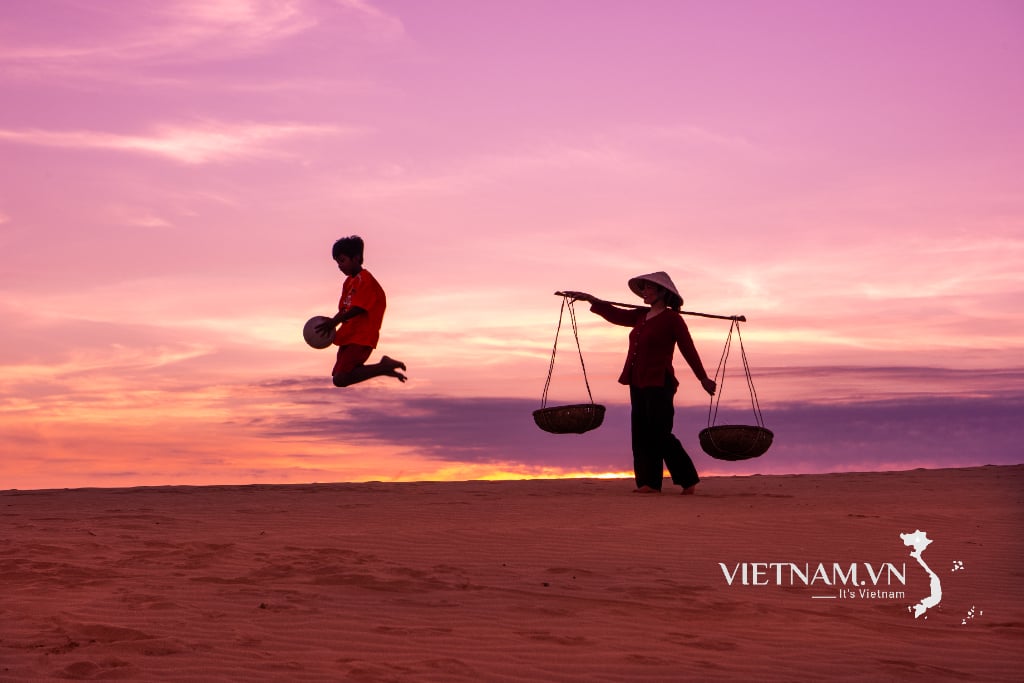


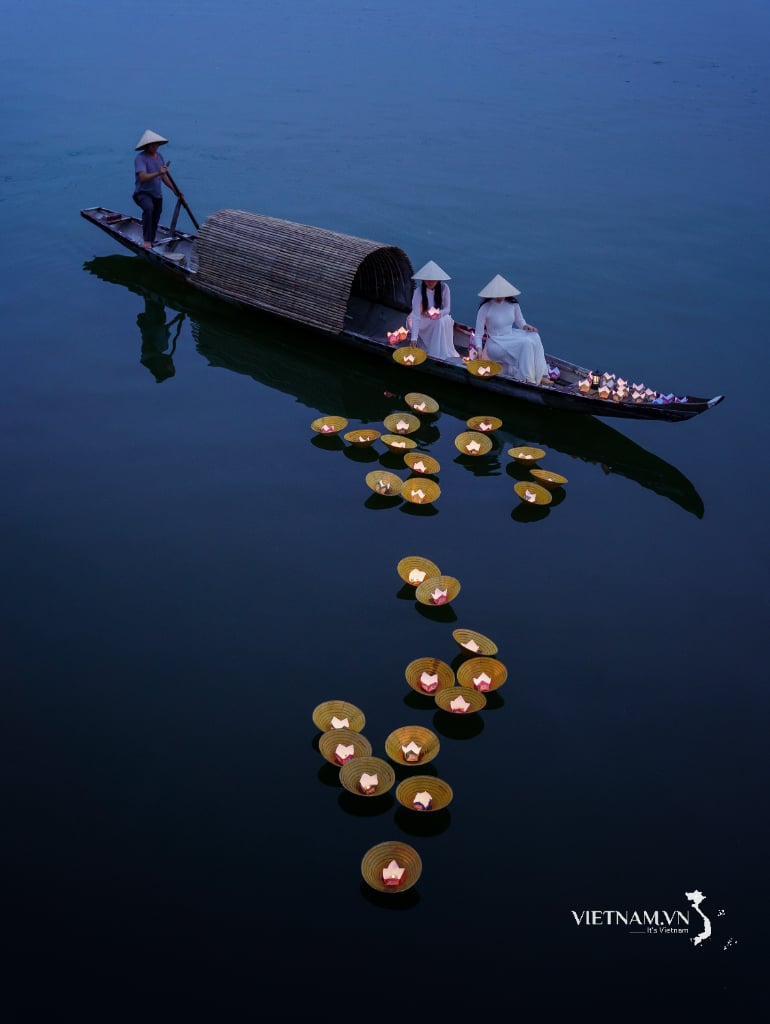
Comment (0)